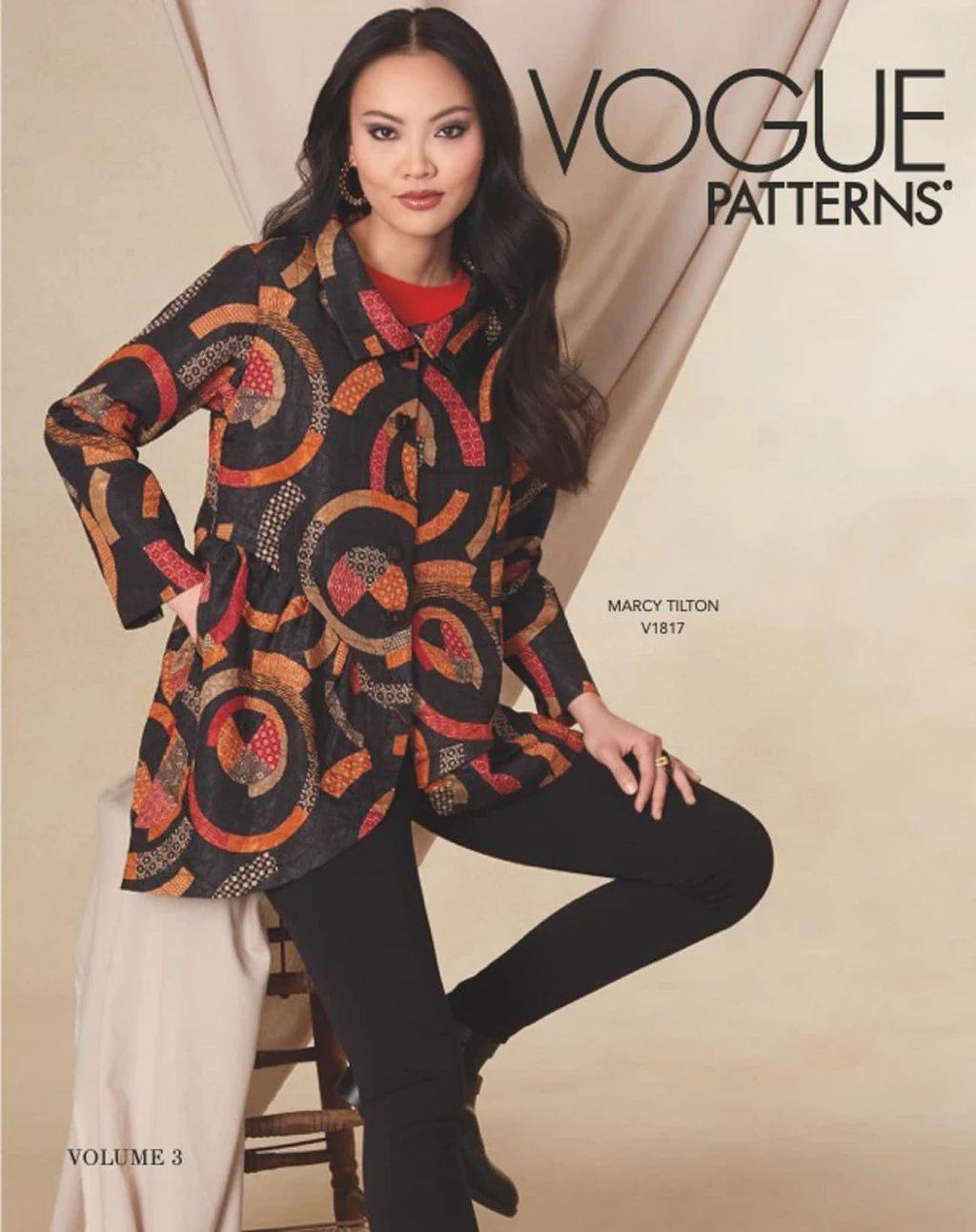The fit skims at the bust, then floats over the figure. Vogue rates the sewing rating as average. The asymmetrical design features two collar variations which you can plug in to either version. One collar is a simple bias collar that can stand up or lie flat, and the other version is single layer and pieced so lends itself to using different fabrics.
The vest will layer beautifully under the jacket too, so you could design an ideal core wardrobe or travel version - the secret here is to make one of the pieces in a smooth fabric like taffeta. For travel, the jacket could be make in rainwear.
The flannel vest is the #1 garment I wore more than any other last fall and winter. Made it a cotton flannel as a prototype version for the pattern envelops. I always start any new pattern design on one for myself to work out the kinks, figure out the order of construction and test fabrics. When finished, I loved my own version so much that I used exactly the same fabrics for the pattern envelope, using some fabrics from my stash and others from marcytilton.com I wore that vest at home almost everyday doing domestic tasks - cooking, sewing, walks in the woods, in the design and photo studio. It is cozy yet not bulky and works well over jeans and leggings, even over a dress. I can toss it in the washer, hang to dry (NEVER put my hand made clothes in the dryer), with no sigh of wear and tear.
The line art shows the details. You can use one fabric or combine a collage of different fabrics.

Cutting and Sewing Tips
- When using different fabrics, I work out the design in advance (pinning the pattern pieces on a dress form helps to see how the garment will look when worn, then pin a swatch of the fabric choice on the pattern pieces.


- The pattern uses lapped seams. I mark the stitching line with erasable tailor chalk to get a smooth even line of stitching.
- To assure a smooth even curve along the hems, sew a row of stitching through a single layer, a scant 1” from the edge - the stitching helps mark a pressing line so the edge can be pressed under smoothly and evenly.
- “Set’ the gathers so they lie flat and smooth. Working over a ham, position the gathers so they are parallel and even. Steam, holding the iron above the fabric, gently pulling lengthwise to create smooth parallel folds which will be ‘set’ with steam, do not flatten, let the steam do the work.















